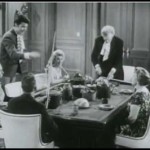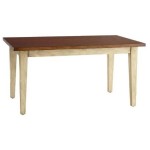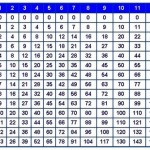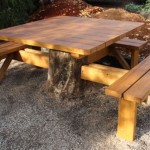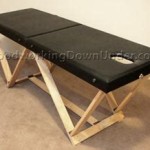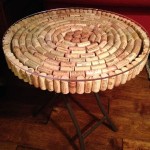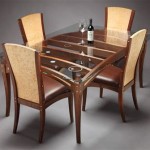Unveiling the Power of the 4 Times Table within a 100 Square
The 100 square, also known as a number grid or a hundreds chart, is a fundamental tool in early mathematics education. It visually represents the numbers from 1 to 100 in a sequential grid format. This seemingly simple chart provides a powerful platform for exploring various mathematical concepts, including number patterns, sequencing, addition, subtraction, and, crucially, multiplication. The 4 times table, a foundational element of multiplication fluency, can be effectively taught and reinforced using the 100 square, leading to enhanced understanding and recall.
Using the 100 square to learn the 4 times table transforms rote memorization into a visual and interactive experience. Children can actively engage with the chart by coloring, circling, or marking multiples of 4, thereby solidifying their understanding of the relationship between multiplication and repeated addition. This hands-on approach makes learning more engaging and memorable, fostering a deeper comprehension of mathematical principles.
Visual Representation of Multiples of 4
The primary benefit of using a 100 square for learning the 4 times table lies in its visual representation of multiples. When children shade or highlight every fourth number on the grid, a distinct pattern emerges. This pattern showcases the relationship between multiplication and repeated addition in a visually compelling manner. They can clearly see that 4, 8, 12, 16, and so on, are all equally spaced apart, reinforcing the concept of constant intervals in multiplication.
The visual pattern also aids in understanding how the 4 times table connects to other mathematical concepts. For example, the shaded numbers often form diagonal lines or other recognizable shapes, helping children to recognize patterns and relationships between numbers. This visual connection fosters a more holistic understanding of mathematical principles, moving beyond simple memorization of facts.
Moreover, visual learners benefit significantly from this approach. For many children, seeing the multiples of 4 laid out in a grid makes the concept far more accessible and easier to grasp than simply hearing or reading about them. The 100 square transforms abstract mathematical ideas into tangible, visual representations that can be readily understood and remembered.
Reinforcing the Connection Between Multiplication and Repeated Addition
The 100 square method for teaching the 4 times table effectively demonstrates the connection between multiplication and repeated addition. By highlighting every fourth number, students visually represent adding 4 repeatedly. Starting at 4, adding 4 leads to 8, adding another 4 leads to 12, and so forth. This action clearly shows that 4 x 1 = 4, 4 x 2 = 8, 4 x 3 = 12, and so on, directly linking multiplication to the concept of repeated addition.
This practical application of repeated addition reinforces the fundamental definition of multiplication. Students are not simply memorizing multiplication facts; they are actively constructing them by adding groups of 4. This active learning process promotes a deeper understanding of the underlying principles of multiplication. The visual representation on the 100 square provides a clear and concise illustration of this foundational mathematical relationship.
Furthermore, this understanding of repeated addition helps students to solve multiplication problems without relying solely on rote memorization. If a student forgets the product of 4 x 7, they can visualize the 100 square and count forward by fours seven times, starting from 4. This approach provides a backup strategy for solving multiplication problems and reinforces the underlying concept of repeated addition.
Facilitating Skip Counting and Number Sequencing
The 100 square is an excellent tool for practicing skip counting, which is a crucial skill for developing number sense and multiplication fluency. When learning the 4 times table, students can use the 100 square to practice skip counting by fours. By starting at 4 and repeatedly adding 4, they can easily skip count through the multiples of 4, reinforcing their understanding of the sequence of numbers in the 4 times table.
Skip counting on the 100 square not only reinforces the 4 times table but also strengthens general number sense. Students become more comfortable with the patterns and relationships between numbers, improving their ability to estimate, calculate, and solve problems. The 100 square provides a concrete and engaging environment for practicing skip counting skills, fostering a deeper understanding of number sequences and patterns.
The practice of skip counting on the 100 square also helps students to develop their number sequencing skills. They learn to recognize the order and relationship between numbers, which is essential for understanding more advanced mathematical concepts. As they skip count by fours, they can see how the numbers progress in a predictable and consistent manner. This visual confirmation helps to solidify their understanding of number sequencing and improves their overall mathematical fluency.
While the 100 square primarily displays numbers in a sequential manner, it also implicitly touches on the concept of even and odd numbers. When highlighting multiples of 4, it becomes evident that all resulting numbers are even. This observation can lead to discussions about the properties of even numbers and how they relate to the 4 times table. The 100 square, therefore, becomes a versatile tool for exploring multiple mathematical concepts simultaneously.
The 100 square also allows for the exploration of the relationship between the 4 times table and other times tables, such as the 2 times table or even the 8 times table. For instance, students can observe that the multiples of 4 are also multiples of 2. This observation leads to the understanding that multiplying by 4 is the same as multiplying by 2 twice. Similarly, they can discover that multiples of 8 are also multiples of 4, furthering their understanding of the relationships between different multiplication tables.
Furthermore, the 100 square can be modified to extend the learning beyond the 4 times table. For example, students can be challenged to find the multiples of 4 that are also multiples of 3 or 5. This exercise encourages critical thinking and problem-solving skills, as students need to analyze the 100 square to identify the numbers that meet both criteria.
Incorporating real-world examples can further enhance the learning experience. For instance, students can be asked to use the 100 square to solve problems related to groups of 4. Examples could include: "If each table seats 4 people, how many people can sit at 5 tables?" or "If there are 4 wheels on each car, how many wheels are there on 8 cars?" These practical applications help students to see the relevance of the 4 times table in their everyday lives.
To further diversify the learning experience, different activities can be incorporated alongside the use of the 100 square. These activities could include games, worksheets, and interactive software. Games such as "Multiplication Bingo" or "Four-in-a-Row" can be adapted to focus on the 4 times table. Worksheets can provide practice in solving multiplication problems and identifying patterns. Interactive software can provide a more engaging and personalized learning experience.
The 100 square can also be used to introduce the concept of division. By starting with a multiple of 4 and repeatedly subtracting 4, students can visually represent the process of division. For example, starting at 20 and subtracting 4 repeatedly will show that 20 ÷ 4 = 5. This approach helps to connect multiplication and division as inverse operations, fostering a deeper understanding of both concepts.
The 100 square can be a valuable tool for identifying and addressing common misconceptions related to the 4 times table. For instance, some students may confuse the sequence of numbers or struggle to remember specific multiplication facts. By using the 100 square, teachers can visually demonstrate the correct sequence and help students to correct their errors. The 100 square provides a concrete and visual way to address misconceptions and reinforce correct understanding.
Ultimately, the use of the 100 square to teach the 4 times table offers a multi-sensory and engaging approach to learning multiplication. By combining visual representation, hands-on activities, and real-world examples, the 100 square helps students to develop a deeper understanding of the 4 times table and its applications. This approach not only improves multiplication fluency but also fosters a more positive attitude towards mathematics in general.
The 100 square proves to be an indispensable resource in the elementary mathematics classroom. Its versatility extends beyond the 4 times table, serving as a foundational tool for teaching various mathematical concepts. Its simplicity allows for easy integration into existing lesson plans, while its visual nature caters to diverse learning styles. The 100 square truly embodies the principle of making abstract mathematical ideas concrete and accessible to young learners.

Learning The 4 Times Table Street

4 Times Table Multiplication Square

Why And How You Should Use A Times Table Grid Free Printables

Printable Multiplication Table Chart

Learn Your Times Tables At A Glance With 100 Square Smartick

Multiplication Number Square Teacher Made Twinkl

Learn Your Times Tables At A Glance With 100 Square Smartick

4 Times Table Multiplication Square

Multiplication Chart 1 100 Free Printable

Multiplication Charts Free Printable Times Table S 1 12 15 20 And More

